The Zyxel MG-105 is a 5-port 2.5GbE switch that is really interesting since it was the lowest-priced 5-port 2.5GbE switch we could find on Amazon when we started the Ultimate 2.5GbE Switch series. We also received many requests to review the unit when we reviewed switches previously. As such, it was time to take a look at the switches to see how they perform.
Ultimate Fanless 2.5GbE Switch Roundup
You may have seen that we published the Ultimate Cheap Fanless 2.5GbE Switch Mega Round-Up. Here is the video for that one where this switch appeared.
We decided to do the round-up first and will be filling in with reviews that we had not published at that point, including this one.
Just to note, we have 6 more switches in the lab for testing already, and another 8 on the list of to-do that are not in the switch round-up we published. We are going to add them to the round-up page as we review them.
Zyxel MG-105 Review 5x 2.5GbE Unmanaged Switch
The front of the switch is very basic. We get five 2.5GbE ports, a 12V DC input, and then status LEDs. The status LEDs are away from the actual ports themselves on the side.
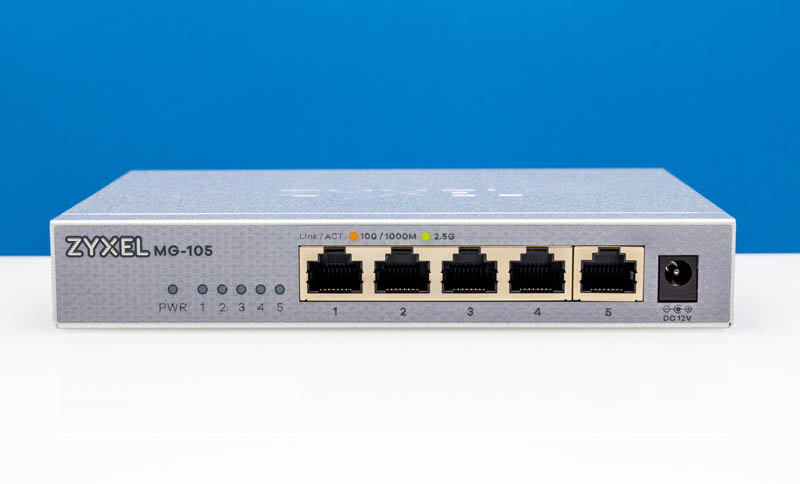
The switch itself is desktop mounting only, there are no rackmount ears. The top says “Zyxel”.
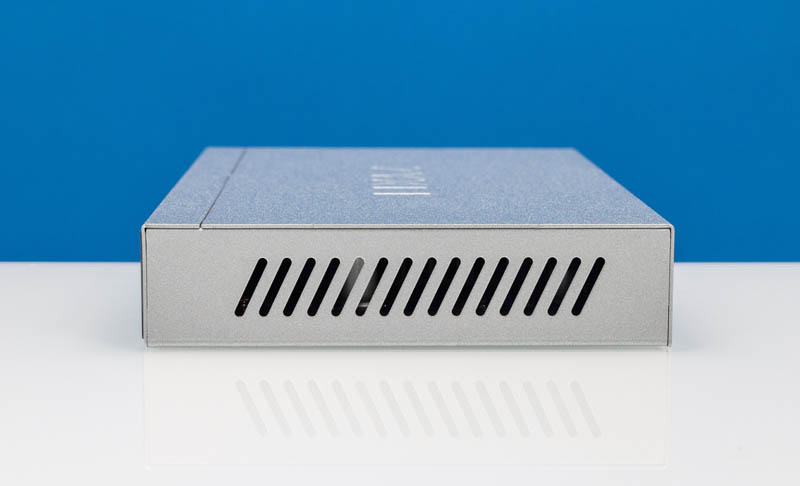
Both sides only have vents.
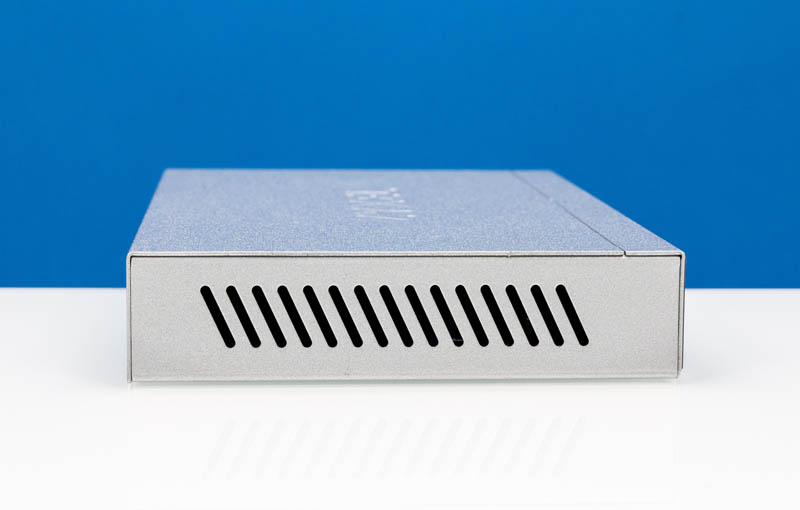
The back is just featureless metal.
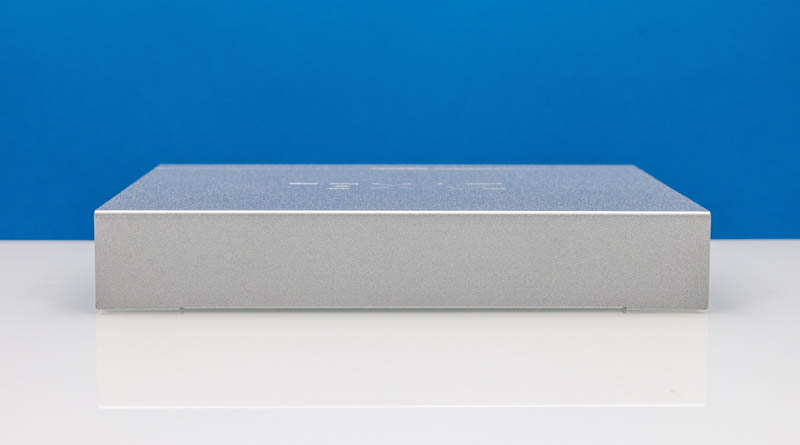
Inside the switch, We can see one relatively tall heatsink.
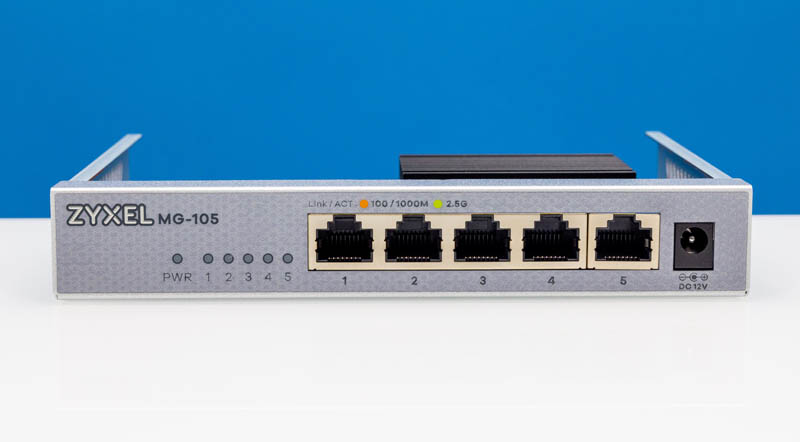
This is the internal view and one can see the taller heatsink over the switch chip.
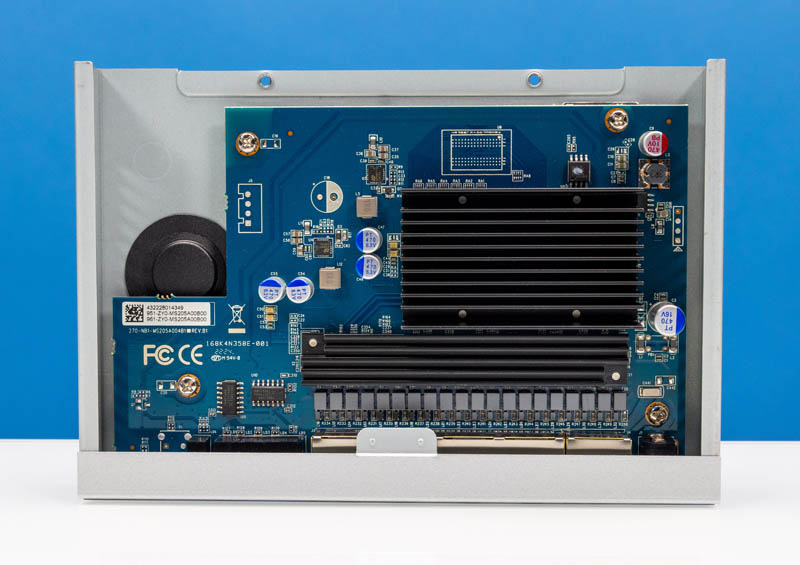
While this is a fanless design, the larger heatsinks made us wonder about the power consumption of this unit.
Next, let us get to the management, performance, power consumption, and our final thoughts.

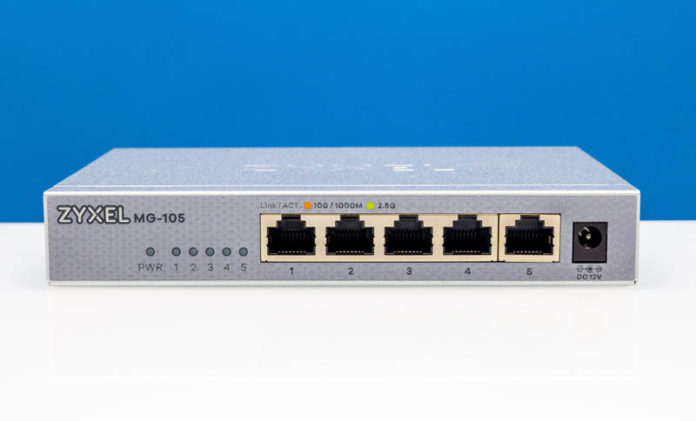



As already observed, the total throughput graphs look basically the same. To me this means one could be measuring other things: latency, packet loss, fairness, buffer size, jumbo packets and response to things like MAC flooding.
Thanks for the interesting set of reviews!
Loving the 2.5G content
“At idle, we saw 4.4W which is higher than the 3.8W-4.4W we would expect from a switch like this.”
Small typo: The picture would indicate you meant 4.7w at idle.
So the market is all going for 2.5G Ethernet? What happened to 5G Ethernet?
Please test again power usage with professional power meter, because that power meter is not accurate.